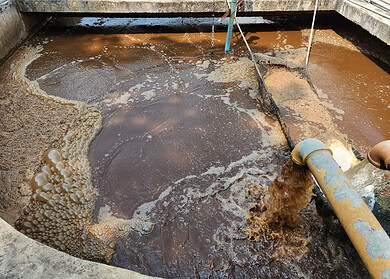‘Forever Chemicals’ regulation may cost US water utilities millions

The U.S. Environmental Protection Agency (EPA) has finalized the first national standard to limit dangerous PFAS, also known as “forever chemicals,” found in nearly half of the drinking water in the United States. The new rule, which aims to safeguard public health, is expected to reduce exposure to these potentially cancer-causing toxins for about 100 million people across the country, prevent thousands of deaths, and reduce tens of thousands of serious illnesses.
Under the proposed measure, drinking water systems would have to keep the level of the most common forever chemicals, PFOA and PFOS, below four parts per trillion. Three other types of forever chemicals — Gen X, PFNA, and PFHxS — must be kept below 10 parts per trillion. The EPA says these strict limits are necessary to protect the public from long-term exposure to these harmful compounds.
However, the cost of complying with the EPA’s standard has many utility officials and politicians worried about the expense. Utilities across South Carolina face hundreds of millions of dollars in costs to cleanse drinking water of these forever chemicals. Columbia, one of the state’s largest water systems, estimates costs ranging from $150 million to $200 million just to install filters on its water supply.
“The costs researchers are anticipating are prohibitive,” said Columbia Mayor Daniel Rickenmann, calling the federal limit an “unfunded mandate” that will test cities like Columbia. “From estimates, the costs would equal our entire general budget for water. Yeah, there are a lot of mayors and water systems concerned.”
Despite these concerns, the EPA says it will provide time and financial assistance to help water systems test for PFAS and clean up the water. Water systems would have access to $9 billion to address PFAS contamination, and an additional $12 billion from the federal bipartisan infrastructure law could go toward PFAS cleanup.
Forever chemicals, used widely by industries for decades, are a class of compounds of increasing concern due to their health threats. Studies have linked exposure to the chemicals to some types of cancer, thyroid disease, birth defects, and depressed immune systems. These chemicals have a variety of uses, including as ingredients in non-stick frying pans, waterproof jackets, and stain-resistant carpets.
While the goal of the rule is to protect public health, the cost of compliance has many utility officials and politicians worried about the expense, setting the stage for a potential showdown between environmental advocates and municipal leaders grappling with the financial burden of implementing the new regulation.
Enjoyed this story?
Every Monday, our subscribers get their hands on a digest of the most trending agriculture news. You can join them too!
















Discussion0 comments